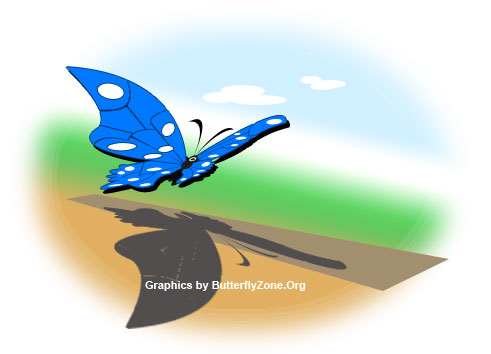Flutter Fly

It is a real treat for an observer to watch a butterfly fly across. Its fluttery flight is so unique that the butterfly could well be called as a flutter fly.
It may seem that the butterfly is just a random erratic wanderer. This is not correct; actually, the butterfly is quite an agile insect. It exhibits extraordinary skills at taking off, manoeuring, maintaining steady flight and landing.
The butterfly has two pairs of wings, the forewings and hind wings. During flight, the forewings and hind wings are held together. Thus they function as a single wing on either side of the body. By stroking the wings up and down, the butterfly makes its body fly in the air.
Scientists have watched butterflies, fly through specially made glass tunnels in the laboratories. They passed smoke into the tunnels. As the butterfly flapped its wings against the smoke current, the scientists were able to see how the smoke moved around the wings. They concluded that the air would also move the same way around the butterfly, in the natural environment.
The scientists studied the wing strokes and came to know that the butterfly displays different wing strokes and not just one or two, while controlling its flight. They figured out that, this is probably the reason for the unique fluttery flight.
The wings are operated by special flight muscles in the thorax part of the body. The energy supply for the muscles is derived from the nectar the butterfly feeds upon.
Butterflies are known to fly long distances during their migration the way the birds do. They fly distances covering 3000 miles and beyond, travelling 50 miles per day and at 12 miles per hour speed (Monarch Butterfly). This is indeed amazing.
Imagine a swimmer participating in a race with butterfly strokes, at the speed of a butterfly; he would exhaust all his energies in just a few minutes time.
The flight control centre in the brain of the butterfly lies with some 3000 special cells. If at all our engineers are able to understand how these cells function, there would indeed be a revolution in the design of our Aeroplanes !
